Rebuild of ArbitraryWater 1.11: The C stands for (Computer) Role Playing
By ArbitraryWater 10 Comments
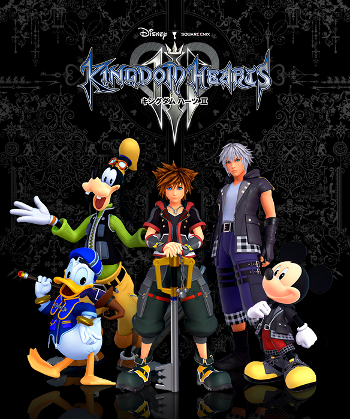
I’ve decided to keep writing. If nothing else, I’d like to keep in practice and celebrate a decade of me writing stupid internet blogs on Giant Bomb, which is a terrifying thing to fathom. June 29 marked 10 years since I wrote… whatever the hell those adolescent scribbles about Goldeneye were supposed to be about, which I mark as the beginning of my internet writing “career.” Things have changed a lot since then, I’m not exactly as active as I was in 2009 (then again, neither are the Giant Bomb forums) but I do legitimately credit these blogs with helping me improve my writing skills. So, to celebrate this occasion that really only matters to me, I’m going to try and put out some blogs focusing on the kind of self-indulgent topics that I care about and have defined my writing on this website. I know that committing to any sort of serious timetable with my current levels of motivation is a fool’s errand, but you can expect *stuff* over the next few months. Look forward to it.
Let’s Talk About The Last 5 Years of CRPGs
See? I told you things were going to get self-indulgent. As far as I’m concerned, this year’s mostly lukewarm E3 was over before it began with the announcement that Larian Studios is developing Baldur’s Gate III. From a dramatic perspective, this really does feel like the culmination of the “CRPG Renaissance” that started around 2014. That was the year the first wave of big Kickstarter success stories started to come out, including for our purposes I feel like I shouldn’t have to hammer on the point too much, but computer role-playing games as I know them were basically dead by the mid-late 2000s. There are plenty of reasons for that (enough to make a write-up of their own) but my point is that outside of Neverwinter Nights 2 and Dragon Age: Origins, the back half of the previous decade was a barren crater if you liked your higher-budget Role-Playing Games PC-oriented, potentially isometric, and filled with “dice rolls ‘n shit.”
Honestly, dates are fuzzy, genres are fuzzy, but for the purposes of this write-up we’re going to focus on the games from the last 5 years that have explicitly embraced the CRPG label, be it through dense storytelling or dense mechanics, with a decent amount of player customization or control. Similarly, this overview is as much a personal report card as it is an industry one. I’ll be frank: my attention span isn’t what it used to be and I’m not as hardcore of a grognard as I pretend to be. These games are often long, and I don’t quite have the same kind of free time that I did when I spent the better part of a summer playing through Wizardry 8 without the speed hack. Expect some hearsay, introspection, or speculation when it comes to the games I haven’t played.
It’s convenient that a lot of the higher profile games of this revival come from just a small handful of studios, because it means I can clump all of their games together like this:
InXile Entertainment
Games: Wasteland 2, Torment: Tides of Numenera, The Bard’s Tale IV
Before helping start this revival with their Wasteland 2 kickstarter, InXile was best known for being the thing Brian Fargo founded after he left Interplay (In Exile? Get it?) Before W2, their most notable titles were the “comedic” Bard’s Tale revival with Cary Elwes and Hunted: The Demon’s Forge, which I’d generously describe as “The Most Forgettable, Most 2011 Game In Existence.” I haven’t played either, and to be perfectly honest, I’m not sure I’m going to.
I’ll be frank: for one of the heavy hitters of this RPG resurgence, I have yet to really love any of InXile’s output. The highest praise I can give Wasteland 2 is that it’s profoundly okay. It came out right around the time my old laptop was on its last legs, so I only finished around half of it, but I feel like I have a pretty good idea of what that game is (grain of salt, etc etc.) When I mean profoundly decent, I mean I enjoyed my time with it well enough, but have zero interest in actually going back and completing it. While a lot of these games have done the work towards modernizing the experience with varying levels of streamlining and quality-of-life improvements, Wasteland 2… feels like it could’ve come out of the late 90s with all of the positive and negative implications that brings. I could go on about how profoundly unsatisfying it is to watch a bar fill up slowly every time you make a skill check, the vanilla version’s terrible UI, or the giant, Fallout-sized recursive influence problem the game has, but for the most part I think it’s… fine. The combat is XCOM-lite, quests have a surprising number of multiple solutions, and in general I think you’d be fine giving it a look if you were so inclined.
My thoughts on Torment: Tides of Numenera are well-documented at this point (see: my blog and the last post of this thread for details) and I stand by them. Planescape Torment was lightning in a bottle and Numenera’s attempt to recapture it doesn’t work. It has all component parts intact, from a verbose script to an intentionally weird and alienating setting, but it doesn’t ever quite come together. It’s a game that’s only become more disappointing in retrospect as I think about it further, and I’d seriously recommend any interested soul just play Planescape Torment already. It’s coming to Switch for heaven’s sake.
Like a lot of Kickstarter games, The Bard’s Tale IV was a technical mess when it first came out. I was not interested in sitting through minute-plus loading times or substandard frame rates, so I kicked that can down the road. Given the release of a “Director’s Cut” in August, I think I’ll reserve judgement for that. I will say as someone who tries to keep himself semi-informed about these sorts of games, it sure does seem like discussion surrounding this one fizzled up immediately.
Obsidian Entertainment
Games: Pillars of Eternity, Tyranny, Pillars of Eternity II: Deadfire
During the dark times, Obsidian was the perennial clean-up crew for other RPG developers. Never quite given enough time or resources to polish their games, they nonetheless earned a reputation for making thoughtful, ambitious stories in their limited means. They’re responsible for personal favorites like Neverwinter Nights 2: Mask of the Betrayer and Fallout: New Vegas, as well as flawed but beloved cult classics such as Star Wars: Knights of the Old Republic II and Matt Rorie’s Alpha Protocol. They also made Dungeon Siege III.

Pillars of Eternity was my favorite game of 2015 and for the most part I think I stand by that sentiment. There’s a strange divisiveness surrounding both it and its sequel that I’ve never quite been able to parse, because I think both manage to nail the style of the old Infinity Engine games better than anything else, for better or worse. Perhaps it’s the writing? Pillars 1 especially has a very somber, almost melancholy tone that never really lets up, and goes fairly dense with the world-building. It also has that fairly obnoxious early kickstarter thing of having some blatant backer content that sticks out like a sore thumb. I could see that seriousness being sort of overbearing, especially when compared to the very D&D high-fantasy hijinks of Baldur’s Gate. I don’t have much to add about Pillars II, other than I think it’s a marked improvement on both a mechanical and writing front. Well, aside from a lukewarm main quest that goes a little too far up its own lorehole and some companion questlines that never quite feel like they go far enough. One of these days I'll get around to finishing it, once I accept that it's okay to play long video games with a mouse and keyboard, even with a mild chronic RSI.
Tyranny is a game I will continue to maintain never got enough attention. Having the misfortunate timing of coming out the week after the 2016 election with the tagline “Evil Won” probably didn’t help, but an RPG about being middle management in the vast, grinding gears of an unambiguously evil empire is a fun premise when detached from the realities of Our Current Political Situation™. Its combat is worse than Pillars, its RPG elements are watered-down, and it seems blatantly clear that the game was significantly scaled down during development. However, if you like the mild discomfort that comes from picking between a series of morally ambiguous “worse and worser” choices in a shorter form (it took me a little over 20 hours) adventure, I seriously recommend Tyranny. In any case, both it and Pillars II sold somewhat poorly and now you’re never going to get another game like them again because Microsoft sure as hell isn’t going to fund isometric RPGs with that giant paycheck of theirs.
Harebrained Schemes
Games: Shadowrun Returns, Shadowrun Dragonfall, Shadowrun Hong Kong
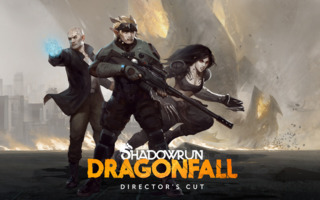
In addition to their successes with Shadowrun in the CRPG space, Harebrained Schemes also managed to successfully revive Battletech, which is yet another game that I’ll need to play more of one of these days.
I think I’ve gone off about it before, but I just need to reiterate that I find Shadowrun’s entire deal to be… a little hard to take seriously. Even at its best, the entire cyberpunk setting and aesthetic tends towards the cornball. You can only have so many MegaCorps, rain-soaked streets, bad retrofuture slang and mentions of “The Net” before can’t take it seriously. Throwing elves and magic on top compounds that problem, and for as much as I’m normally in favor of the Fantasy/Sci-Fi genre mash-up, Shadowrun’s particular blend is something I can’t help but make fun of. I get it, that’s my problem, but throughout my entire playthrough of Shadowrun Returns, I was eternally, keenly aware that it was a setting that was originally created in the 1980s. I fully understand this is a me problem, but I said upfront that this blog is a personal reflection and not a 100% factual objective reflection of the facts.
Shadowrun Returns itself isn’t anything special. It’s profoundly linear, mechanically simplified, bereft of much character, and generally feels like a proof-of-concept for its toolset and an introduction to the world. I wrote a review of it at the time and feel safe saying it’s something you could easily skip. However, I’m to understand that both Shadowrun Dragonfall and Shadowrun Hong Kong have made good on those concepts and that world in a way that people claim is much better. They’ve both been on my short-list of RPGs to play, and honestly, if you want the most compelling reason I want to check out either, it’s that they’re at a reasonable 20-30 hour length instead of the colossal 50-80 hour mark I’d throw around for most of the other games here.
Larian Studios
Games: Divinity Original Sin, Divinity Original Sin 2
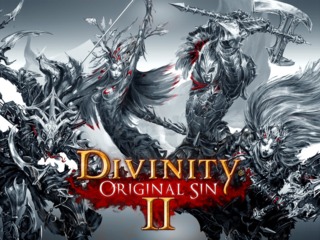
I’ve said it vocally multiple times before, but I think Larian Studios has shifted from a developer of charming, if heavily flawed Eurojank (Divine Divinity, Divinity 2, Dragon Commander) to the arguable winners of this current RPG resurgence. They didn’t need to get bought by Microsoft to stay solvent, so clearly they’re doing something right.
I feel like I’ve gone off, at length, about both Divinity: Original Sin games and how much I love both. While Pillars of Eternity might be closer to my heart, there’s also no doubt that Divinity makes a stronger case for this sort of RPG to an audience who isn’t already nostalgic for it. The first game, both in its vanilla and enhanced forms, is undoubtedly flawed. You can win a significant chunk of otherwise solid turn-based tactical combat using the same handful of crowd control abilities from levels 1 to 20. On the other end, the writing maintains an obnoxious level of tongue-in-cheek goofiness that makes it difficult to take seriously. Original Sin II fixes both of these problems, with combat and writing that maintains a stellar level of quality the entire time. If I have to pick a bone with both games, it’s a combination of both of them maybe being about a dozen hours too long, and the itemization being aggressive to the point of almost being exhausting.
And the rest!
Games: Too many to count.
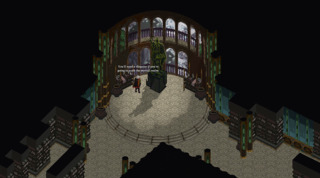
I’d be remiss if I didn’t mention some of the other games from the last few years, and in some ways I think I’m almost doing a disservice by just focusing on the larger-scale, multi-million dollar crowdfunding successes. Unfortunately, my experience with the smaller indie RPGs of recent years is far more limited. I can’t think of much outside of playing through Age of Decadence and finding it… not for me, and putting just enough time into the notorious Grimoire: Heralds of the Winged Exemplar to ask for a refund from Steam. I still intend to give games like Underrail, Serpent in the Staglands, Lords of Xulima, and Tower of Time a shot eventually, but if I’ve learned anything from my backlog, eventually can be a long time, or sometimes never. Still gonna play Arcanum one day, I swear.
First and foremost on my list is Owlcat Games’ Pathfinder: Kingmaker, based on the adventure path of the same name. If Pillars of Eternity is the streamlined, human-friendly take on the Infinity Engine that makes reasonable adjustments for a computer game, then Kingmaker is the raw unprotected Pen and Paper monstrosity that gives you six characters, a notoriously complicated ruleset, and a punch in the face for good measure. As someone who loves the customizability of Pathfinder in the abstract, but often finds the minutiae obnoxious in actual P&P sessions, Kingmaker gives me the complexity I want, without the part where I constantly need a calculator open to keep track of all of my modifiers. It’s also an adaptation of one of Paizo’s most ambitious official adventure modules, so in addition to having the crunchy dice rolls I so desperately need, it’s also a fairly open, sandbox-y adventure with some kingdom management stuff on top. It’s really great, so… like half of the other recent RPGs on this list, I got sidetracked at some point and haven’t gotten back to it.
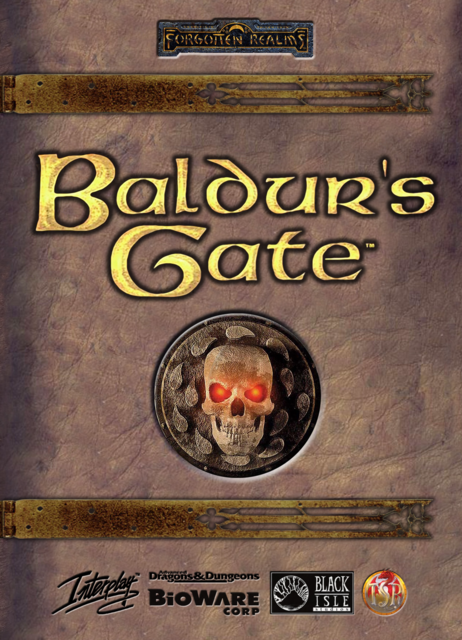
While Legend of Grimrock is slightly too early to fit onto the convenient 5 year window, its sequel came out in 2014 and thus totally counts for the purposes of this blog. I think both games are admirable, stellar attempts at recreating the Dungeon Master/Eye of the Beholder/Lands of Lore style of real-time, puzzle-heavy, strafe parades. I’m also kinda trash garbage at that exact style of game, and Grimrock 2 had the misfortune of coming out around the time my old computer was well on its way to exploding. It’s in my backlog for a reason, and like everything else in my backlog, I’ll get to it. Someday. Maybe.
Baldur's Gate: Siege of Dragonspear is the weirdest fucking shit and I still cannot get over how little anyone talked about it outside of a bunch of idiots angry that it acknowledges the existence of trans people. It's a goddamn Baldur's Gate midquel/reunion special a good 15 years after Throne of Bhaal that tries to bridge between the first and second game from the people responsible for the Enhanced Editions of all the Infinity Engine games. The most insane thing is that it's honestly far more successful at that than it has any right to be.
I could keep going for a while, but I’m already pressing up on 2500 words, which I feel like is a good sign that I should stop. If I missed anything egregious, feel free to let me know. If you agree or disagree with my very hot takes, feel free to let me know. Politely. If you want to point out how few of the games presented in this blog I've actually played to completion... fair enough. Finally, I’d like to thank everyone who’s encouraged or inspired my writing over the last 10 years. I dunno how many of you are left ‘round these parts, but thank you. Oh! And a happy 11th anniversary to Giant Bomb on top of that!
